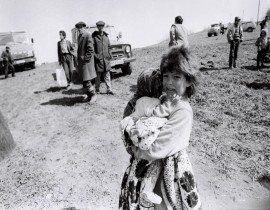Politicon.co
Nuclear threat and diplomatic challenges in a new wave of global conflicts
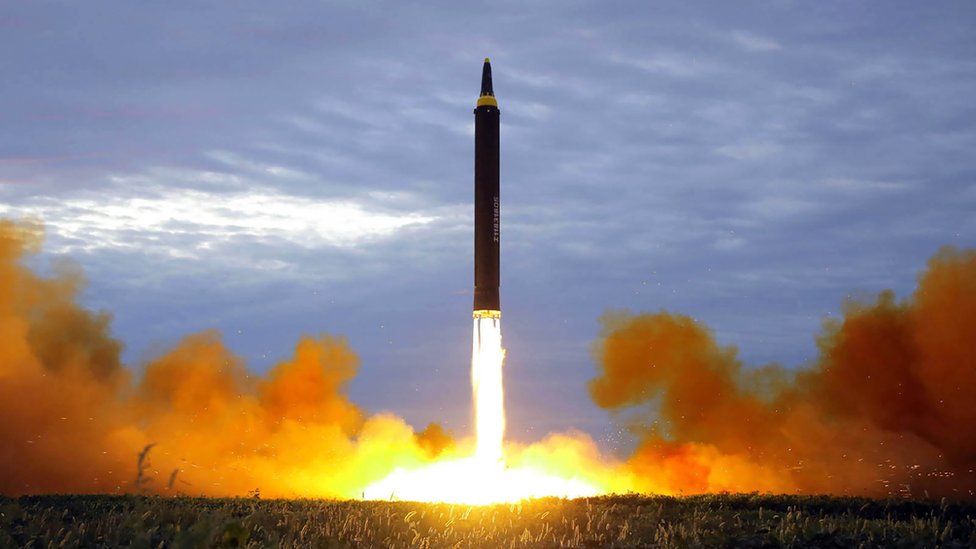
Introduction
The first efforts to prevent the proliferation of nuclear weapons occurred during the Cold War, during the ongoing tensions between the Soviet Union and the United States. Mutual moves to expand the area of use of weapons led to the signing of a series of treaties on limitation. It was during this period that the Strategic Arms Limitation Talks (SALT I in 1967 and SALT II in 1972) limited the number of nuclear missiles in their respective arsenals by placing limits on intercontinental ballistic missiles (ICBMs) and limited anti-ballistic missiles (ABMs). These agreements led to a relative decrease in tensions during the Cold War. As a continuation of this relationship, the 1987 Intermediate-Range Nuclear Forces Treaty (INF), which eliminated all intermediate-range nuclear missiles, gave rise to new trends in cooperation (Serhal 2024). However, it is not possible to say that these agreements are more effective than they were in the past. The reason for this is that these agreements are generally not binding and do not guarantee the prevention of nuclear proliferation. Issues such as implementation problems and some states' failure to comply with the agreements still persist.
On the other hand, one of the main facts showing that the agreements are not sufficiently important is the official termination of the Intermediate-Range Nuclear Forces (INF) Treaty in 2019, while mutual accusations between the US and Russia continue. After the United States officially withdrew from the agreement on August 2, 2019, Russia announced that it would not comply with the agreement (Akhtar 2024). Thus, the agreement has completely lost its validity. The main goal of nuclear diplomacy is to conduct effective diplomatic negotiations to control and regulate the development, use and deployment of nuclear weapons. It involves discussions and agreements between countries aimed at preventing the spread of nuclear weapons and limiting the risk of nuclear war. However, in recent years, there has been considerable uncertainty in the field of nuclear diplomacy. At a time when geopolitical risks are increasing, negotiations around nuclear diplomacy have come back to the fore. The study focuses on the successes and failures of nuclear diplomacy in recent years and describes what scenarios might exist for the future.
Diplomacy Against the Rising Nuclear Threat
The nuclear threat, which relatively declined after the end of the Cold War, has regained importance in a period of new global conflicts. In the article “Nuclear Weapons After the Cold War” by Carl Kaysen, Robert McNamara and George Rathjens, the authors argue that the role of nuclear weapons has changed with the end of the Cold War and that their use is risky in the emerging world order (Kaysen 2019). In the second decade of the 21st century, non-proliferation negotiations have brought many innovations and hopes for the future as a result of the steps taken to halt Iran's nuclear program.
As a result of intensive negotiations between Iran and the P5+1 (US, UK, France, Germany, Russia and China) between 2012 and 2015, on July 20, 2015, the UN Security Council unanimously adopted a resolution ratifying the nuclear deal and approving the lifting of nuclear sanctions (UN Security Council n.d.). Under the nuclear deal, known as the Joint Comprehensive Plan of Action (JCPOA), Iran committed to dismantling most of its nuclear program.
The International Atomic Energy Agency (IAEA) reports from 2015 to 2017 clearly show that Iran has met its nuclear commitments (Institute for Science and International Security n.d.). The smooth implementation of the agreement over two years was hailed by many experts and officials as a major achievement in nuclear diplomacy and was hoped to be long-lasting. However, the magnificent diplomatic achievement was overturned by Donald Trump's withdrawal from the JCPOA immediately after his election as US president in 2018. As a result, US-Iran relations, which had entered a new phase after many years, became significantly strained with the re-imposition of sanctions. After the US assassination of Iranian General Qasem Soleimani in January 2020, Iran declared that it would not comply with its commitments and would not limit its uranium enrichment. The IAEA reported on March 3, 2020, that Iran had more than 1,000 kilograms of uranium enriched to 4.5 percent and that additional centrifuges were being used at the Fordow facility to enrich uranium (Institute for Science and International Security n.d.).
At the same time, the ongoing high tensions in the Middle East have increased the number of positive opinions on the revision of Iran's nuclear doctrine. However, Kamal Kharrazi, the head of the Strategic Council on Foreign Relations (SCFR), said that Iran has no intention of producing nuclear weapons, but if there is a serious threat to Iran from other states, a change in Iran's nuclear doctrine would be inevitable.
Future and Consequences of the Nuclear Threat
The ongoing conflicts and the recent escalation of tensions between the two nuclear powers, India and Pakistan, suggest that the nuclear threat will become more widespread. Pakistani officials have declared that nuclear and conventional weapons will be used if India attacks. According to the new nuclear weapons doctrine approved by Russian President Vladimir Putin in 2024, Russia will use nuclear weapons in all cases where there is a real threat to the country's sovereignty (Institute for the Study of War 2024). However, in recent speeches, Putin expressed hope that this situation will not need to arise as a result of ongoing diplomatic negotiations. In the face of the complex geopolitical landscape of the world, the nuclear threat will either be prevented by diplomatic means or its area will expand further. The possibilities that could exacerbate the nuclear threat are shown below:
1. Trump's territorial claims may not only cause new tensions in the future, but also lead to the withdrawal of a number of nuclear-weapon states from the Nuclear Non-Proliferation Treaty (NPT), which came into force in 1970.
2. In the face of Israel's increasingly strong dominance in the Middle East, the possession of nuclear weapons by Iran, its arch-rival, is one of the main means to achieve regional hegemonic status, as Pollack said. Iran's possession of nuclear weapons will not only create a new dynamic in the region, but will also increase the threat to the Gulf states. Saudi Arabia in particular sees Iran as the biggest threat to its security. This could prompt the Gulf states to withdraw from the NPT and take steps towards acquiring nuclear weapons.
3. The US intends to prevent Iran from acquiring nuclear weapons and limit its sphere of influence in the region. However, this situation will further aggravate relations and give impetus to the development of Iran-Russia-China cooperation at a higher level. At the same time, extensive US intervention in the region may lead to changes in Iran's nuclear doctrine.
Diplomatic negotiations with Iran will be relatively difficult compared to 2015. One of the main facts supporting this is the US's withdrawal from the nuclear deal in 2018, acting contrary to diplomatic relations. This situation may cause distrust on the other side in establishing new diplomatic relations. At the same time, Donald Trump said in a media interview that if Iran does not come to an agreement, unprecedented bombing will be carried out and tougher sanctions will be imposed. Recently, an explosion occurred in Bandar Abbas, where Iran's uranium mines are located, causing serious consequences (Mao 2025). Such events could lead to a deadlock in diplomatic relations.
However, in order to promote the non-proliferation of nuclear weapons and prevent new conflicts, the process of negotiations, especially between the US and Iran, as well as other influential actors, must be continued on a regular basis and dangerous situations that could escalate the situation should be avoided. Despite the ongoing tense geopolitical processes in the Middle East, there are still opportunities for positive results from diplomatic negotiations. Retired US General Frank McKenzie states that military action is the “worst way” to prevent Iran from developing nuclear weapons (Davenport 2024). At the same time, according to many Iranian officials, diplomacy is the best way to ensure that the nuclear program is peaceful and to reduce the threat.
In the first phase, diplomatic relations with Iran should be expanded and US-Iranian relations should reflect softening trends. The provisions of the JCPOA should be respected as an effective bargain. At the same time, the number of sanctions against Iran should be reduced in the future, there should be no interference in the country's foreign policy and internal affairs, and steps should be taken to ensure that there are trends of improvement in Israeli-Iranian relations. Ensuring positive dynamics in Iran's relations with the Gulf countries has the potential to change the tense geopolitical situation in the Middle East by preventing potential conflicts. The most important element of establishing peace is preventing competition between conflicting parties in the region.
In order for nuclear diplomacy to be successful and to prevent mass armament, new interstate and international agreements should be adopted or existing agreements should be strengthened. In order to prevent more complex conflicts in the future, certain norms regarding the implementation of new technologies and artificial intelligence in the military should be established.
Conclusion
As a result, urgent steps must be taken to reduce or limit the nuclear threat. Otherwise, increasing conflicts will lead to a more desperate situation. Although the path of diplomacy is difficult, it has an important role in shaping the security environment. Finally, as Joseph Cirincione emphasizes, international actors must unite under one umbrella to make the world a safer place by promoting nuclear non-proliferation.
References
Akhtar, R. (2024). The political reckoning in a Post-Nuclear use landscape. Journal for Peace and Nuclear Disarmament, 7(1), 78–90. https://doi.org/10.1080/25751654.2024.2364421
Davenport, K. (2024). “Rethinking U.S. nuclear diplomacy with Iran for 2025”. Arms Control Association. https://www.armscontrol.org/act/2024-10/features/rethinking-us-nuclear-diplomacy-iran-2025
Institute for Science and International Security. (n.d.). Analysis of the IAEA’s fifth Iran Nuclear Deal Report. https://isis-online.org/isis-reports/detail/analysis-of-the-iaeas-fifth-iran-nuclear-deal-report/8
Institute for Science and International Security. (n.d.). Analysis of November 2020 IAEA Iran Verification and Monitoring Report. https://isis-online.org/isis-reports/detail/analysis-of-iaea-iran-verification-and-monitoring-report-November-2020/8
Institute for the Study of War. (2024). Russian Offensive Campaign Assessment, November 19, 2024. https://www.understandingwar.org/backgrounder/russian-offensive-campaign-assessment-november-19-2024
Kaysen, C., McNamara, R., & Rathjens, G. (2019). Nuclear weapons after the Cold War. In Routledge eBooks (pp. 33–51). https://doi.org/10.4324/9780429039522-3
Mao, F. (2025). Iran: Huge blast at Shahid Rajaee port kills at least 28 and injures 800 others. https://www.bbc.com/news/articles/cx251yyvwr3o
Serhal, G. (2024). The case for nuclear diplomacy. https://trendsresearch.org/insight/the-case-for-nuclear-diplomacy/?srsltid=AfmBOoq0vUZrdfv_4PpZzTv53CxvHyfTaFRL4Lh_ytP7yntiblyLTY5M
UN Security Council. (n.d.). Resolution 2231 (2015) on Iran Nuclear issue. https://main.un.org/securitycouncil/en/content/2231/background
![]()
- TAGS :


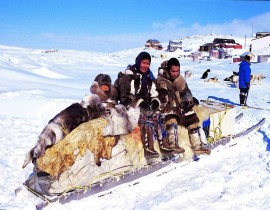
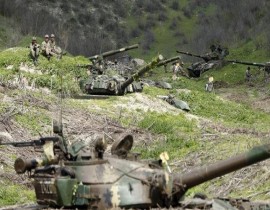
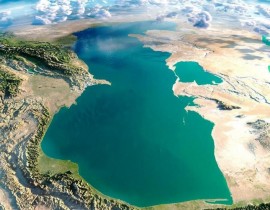
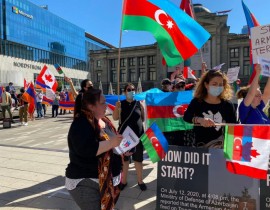
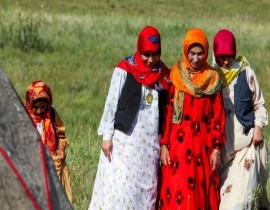
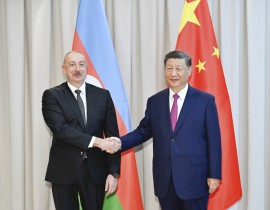

jpg-1599133320.jpg)
